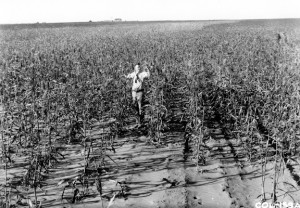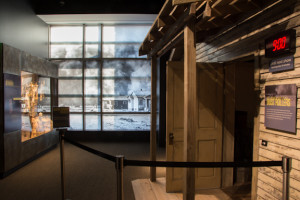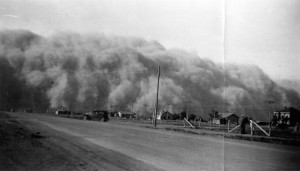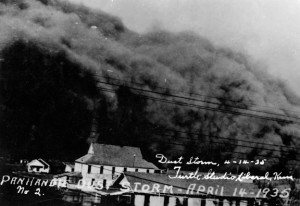Story
This Week in Colorado History
Black Sunday
The morning of Sunday, April 14, 1935 started out with sunshine and blue skies, but by the afternoon the temperature had dropped and an ominous black cloud was quickly approaching. This day would become to be known as Black Sunday. While Black Friday sees the mob of thousands of crazed shoppers, Black Sunday saw gale-like winds sweep across seven different states, and creating a widespread blackout from dust, and was one of the biggest storms during the Dust Bowl.
The Homestead Act of 1862 allowed any American to claim 160 free acres as long as it was farmed for five years. This created a surge in agricultural production generating more crops and fueling the economy. During the 1880’s Baca County, in southeastern Colorado, promised great prosperity. But, the dry climate and isolation caused fluctuations in population. It wasn’t until the invention of the plow and tractor in the 1910s that another boom took place. Traditional natural grasses that had kept the dry soil in place were being plowed for farming. This transition of grassy land to farm fields took place across the U.S. causing the typically dry Western Plains to be exposed to weather elements in ways they hadn’t been before. In the 1930s drought combined with high winds, created catastrophic storms.

The government eventually stepped in to help conserve the eroded soil, and educate farmers on better farming techniques.
Between 1934 – 1941, there were hundreds of dust storms that blew the dried out and plowed up topsoil of the lands in the plains all the way to the East Coast. These “black blizzards” have come to be the image of the Dust Bowl and the Great Depression itself. But the storm on April 14, still ranks as one of the most severe storms, and it was after this storm that the Dust Bowl got its name.
In 1931 Baca Country had 237,000 acres under wheat production, and by 1936 the number had fallen to only 150 acres. The storms had devastated so much land, that the government stepped in. With the passing of the Soil Conservation Act in 1935 which helped educate farmers on better farming practices, along with the aide from Agricultural Adjustment Administration (AAA), to help end the overproduction of farmed foods, change slowly began to take root.

The Black Sunday Object Theater at the History Colorado Center creates a vivid experience of Black Sunday for visitors.
The disasters of the Dust Bowl, and the massive storm on Black Sunday, stand as an example to not ignore ecological limits of our land, and that preserving soil is imperative, especially as the impending drought season encroaches. To experience what Black Sunday was really like, visit the award-winning Black Sunday Theater in the Living West Exhibit at the History Colorado Center.
For more information on the exhibit, please visit http://historycoloradocenter.org/exhibits/living-west/


